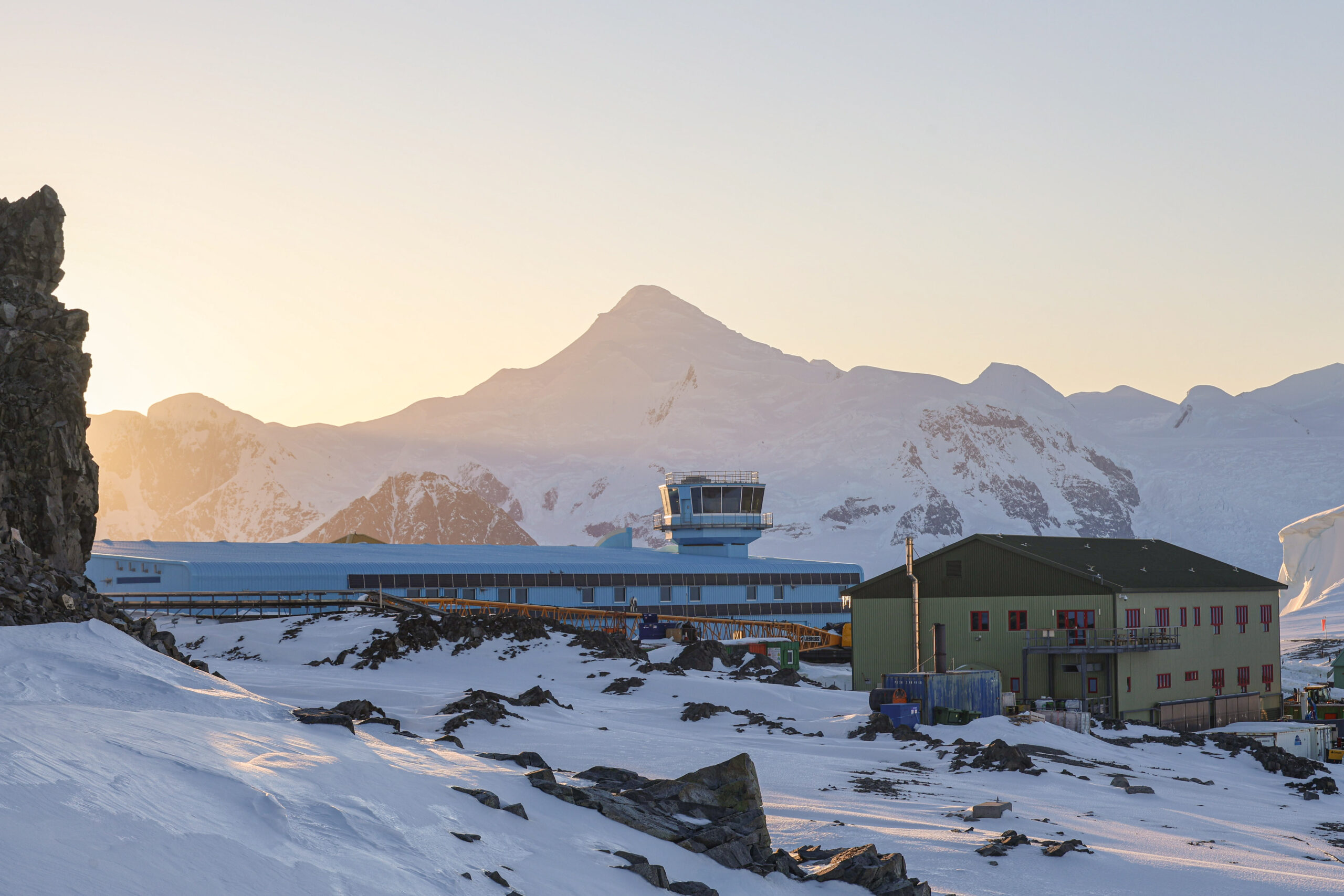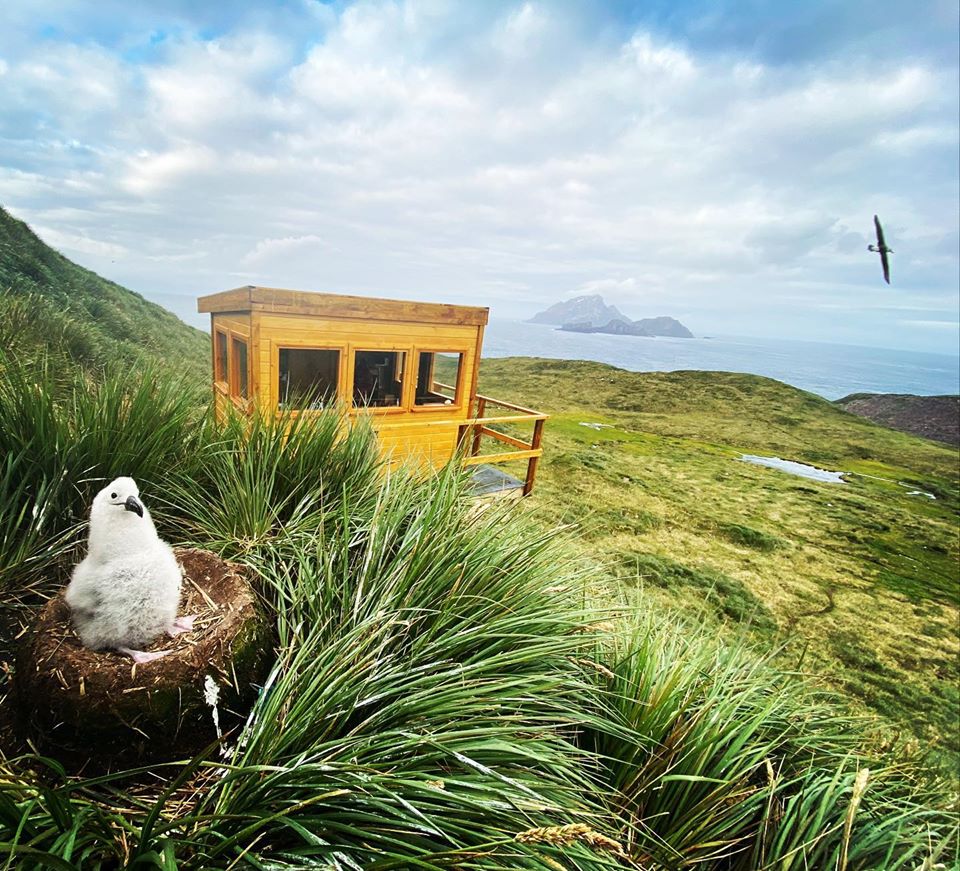RRS Sir David Attenborough departs from Plymouth on 17 October to begin five-week voyage to Antarctica, marking the start of the new Antarctic field season.
Cambridge, UK – British Antarctic Survey (BAS) has officially launched its 2025/26 Antarctic field season. Marked by the arrival of the first aircraft at Rothera Research Station and the departure of the RRS Sir David Attenborough from the UK, the new season brings a full schedule of ambitious science, deep-field exploration and major infrastructure milestones across the Antarctic and sub-Antarctic.
Over the next seven months, researchers and operational teams will deliver more than 60 science projects across five BAS research stations, aboard RRS Sir David Attenborough and at several deep-field and marine locations.

This year's research programme showcases a range of climate, ocean, glaciological and ecological research - including major international collaborations, advanced autonomous technology trials and a collection of long-term environmental data and observations.
Professor Dame Jane Francis, Director of British Antarctic Survey, said:
"With the 2025/26 season underway, research supporting BAS' long-term scientific strategy, Polar Science for a Sustainable Planet, continues. Recent news of global climate tipping points and extreme weather reinforces that research to understand the changing Antarctic is more vital than ever. Whether through modelling, monitoring or fieldwork, our science is central to understand how this region is changing and how this new knowledge will ensure more resilient communities in the UK and across the world."
Season overview with science highlights
RRS Sir David Attenborough: powering science with biofuel
The UK's flagship polar research vessel begins a three-week, 6,000 -nautical-mile voyage to Montevideo, Uruguay and onward to Antarctica. As part of BAS' work to decarbonise, the ship is making the journey using hydrotreated vegetable oil (HVO) - a biofuel helping to reduce the organisation's carbon footprint. Cargo for the research stations includes: 1.2 tonnes of baked beans, 15,000 teabags and 2 tonnes of bread flour.
Major research highlights this season include:
- POLOMINTS: Studying how underwater waves mix ocean heat and nutrients, linking glacier calving to ocean circulation, with teams based at both Rothera Research Station and on board the RRS Sir David Attenborough.
- REWIND: Ice-core drilling to reconstruct 11,000 years of carbon exchange between the Southern Ocean and the atmosphere, taking place near Sky Blu (440 NM south of Rothera Research Station).
- Thwaites Glacier: Partnering with the Korean Polar Research Institute to hot-water drill through this major West Antarctic glacier. The aim is to understand ice-ocean melt processes, to see how this critical part of Antarctica is contributing to global sea level rise now and in the future.
- IRON-MAN: Investigating how iron and manganese control Southern Ocean productivity and carbon cycling, on RRS Sir David Attenborough.
- POETS - Western Core Box (WCB): Tracking krill populations at South Georgia, crucial for regional biodiversity and understanding how the Southern Ocean absorbs carbon dioxide from our atmosphere.
Science at the ends of the Earth
Rothera Research Station - a gateway into the deep field
Researchers will be quantifying how much carbon is stored in the seafloor communities living around Rothera and seeing how this has changed over the past ten years as the climate has warmed. This will include collecting data on seaweed species and anemones to see if the make-up of these seabed communities is changing.
The marine team will also deploy Baited Remote Underwater Video systems (BRUVs) as part of the Blue Belt Ocean Wildlife Analysis Network, to track biodiversity in nearby Ryder Bay and learn more about how changes in sea ice affect krill and benthic ecosystems.
In a major milestone, the new Discovery Building, a cutting-edge science support and operations facility, becomes operational this season. Internal works and system tests are underway, with handover expected by April 2026.

Halley VI Research Station
The Brunt Ice Shelf, home to Halley VI, continues to be the world's most closely monitored ice shelf. After the calving of three giant icebergs between 2021-2024, satellite imagery and 11 GPS units are tracking ice movement and deformation.
Year-round autonomous systems maintain key observations on ozone, space weather, and the upper atmosphere. Scientists will use this data to refine models of ice shelf stability and operational risk in extreme environments.
Deep-field science on Larsen C Ice Shelf
Researchers return to Larsen C Ice Shelf this season to assess how warming air temperatures are affecting one of Antarctica's most vulnerable ice shelves. Teams will conduct site maintenance, recover 10m ice cores and install snow radar at key locations - building vital records for future sea-level rise projections.
King Edward Point Research Station, South Georgia
Researchers are establishing a new long-term acoustic monitoring programme for whales at South Georgia, with a focus on high vessel-traffic areas. It will measure patterns of whale activity, allowing the government of South Georgia and the South Sandwich Islands to help support recovering whale populations.
Scientists will also investigate how breeding gentoo penguins find krill swarms when they go out to feed.
Long-term monitoring of both plankton and higher predators (seals and penguins) continues for the Government of South Georgia and the South Sandwich Islands (GSGSSI), to support the management of South Georgia's three fisheries. Scientists will also be monitoring the recovery of species from the Highly Pathogenic Avian Influenza outbreak in 2023.
Bird Island Research Station
Long-term monitoring of albatrosses, petrels, seals, and penguins, continues at Bird Island this season. Scientists will track foraging behaviour, chick growth and diet to monitor changes in the Southern Ocean food web in response to climate and fisheries pressures. This data plays a key role in shaping policy for sustainable marine resource use in the region.

Signy Island Research Station
Signy will trial a new drone system (DJI Dock 1) to carry out autonomous aerial surveys of the island's wildlife and habitats. The drone, which can potentially be flown remotely from anywhere in the world, will fly pre-programmed missions when weather conditions permit, collecting imagery of moss banks, seals, and seabird colonies. If successful, this proof of concept could revolutionise how remote Antarctic sites are monitored year-round, even during unstaffed winter periods.
Spotlight: Krill, Climate and the POETS Western Core Box (Feb-Mar 2026)
Among this season's most significant marine missions is the Polar Ocean Ecosystem Time-Series (POETS) expedition in the Western Core Box (WCB) around South Georgia. This region sits south of the Polar Front and is a global biodiversity hotspot, with nutrient-rich waters driving massive phytoplankton blooms that support Antarctic krill, a keystone species in the marine food web.
The WCB programme will conduct acoustic surveys of krill to assess biomass, distribution, and seasonal trends; collect net, oceanographic profiles of conductivity and temperature, and multi-sensor mooring data to analyse environmental drivers of krill abundance; link krill variability to climate change, fishing pressure and predator foraging performance, and support long-term ecosystem modelling to inform conservation and fisheries policy.
These studies are central to understanding how the Southern Ocean's role in carbon cycling and food-web stability may change in a warming world.
Connecting with the public: A Ticket to Antarctica
The BAS aircraft carried the names of the many members of the public who signed up for Ticket to Antarctica all the way from Canada to Rothera Research Station. The initiative highlights the human connection to polar exploration and is still accepting names online for those who want to leave their mark on the frozen continent and learn about Antarctic science and operations. New for this year there are educational resources for teachers to use in the classroom. Sign up at www.tickettoantarctica.com
For a full list of the science projects taking place in Antarctica during the 2025/26 filed season please visit: https://www.bas.ac.uk/bas-science-summaries/






